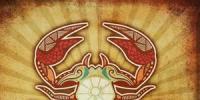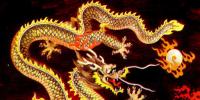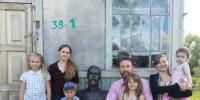What is the world around us? Lesson on the surrounding world on the topic "nature" Dymkovo toy - the history of crafts for children, how to sculpt, how to paint.
Plan
1. Arctic deserts
2. Tundra
3. Forest zone
a) taiga
b) mixed forests
c) deciduous forests
4. Steppes
5. Desert
6. Subtropics
Arctic deserts
Arctic - this is the zone of islands lying around North Pole. It's long here Cold winter The summer is short, cold, and therefore the vegetation is sparse - mosses and lichens.
In the Arctic, the sun does not set for several months - the polar day continues. For several months it is light around the clock, but not warm. The temperature is only a few degrees above 0. In winter, the polar night sets in. The dark ones are dark and very cold. The darkness is illuminated by the moon, stars and Northern Lights.
This is a very cold zone. But this does not mean that there are no animals and plants on it.
Arctic - the kingdom of the polar bear. The lack of land does not bother him; his main habitat is the ice floes of the Arctic Ocean. Polar bear feeds on fish, hunts seals, seals, and walrus cubs.
Numerous pinnipeds also live in the Arctic - seals, seals, walruses, elephant seals. Their elongated, streamlined body shape helps them move through the water at tremendous speed.
Numerous birds find shelter and nest on the coastal cliffs in the summer, setting up “bird markets” on the rocks - geese, gulls, eiders, terns, waders. In rock cracks where small amounts of soil accumulate, in thawed areas of glacial deposits - moraines, mosses, lichens, some types of algae and even cereals and flowering plants settle near snowfields. Among them are bluegrass, cotton grass, polar poppy, sedge, dwarf willows, birch trees. During the cold polar summer they manage to bloom and even bear fruit.
Unfortunately, due to human exploration of the Arctic, complex problems have arisen here. ecological problems: pollution of the northern seas; destruction of commercial fish species; hunting for polar bears and seals. Currently, hunting rare Arctic animals is prohibited. Some bird colonies have been placed under protection. Fishing is limited. Nature reserves have been created, for example, the WRANGEL ISLAND nature reserve.
Tundra
The climate of the tundra is harsh - winter lasts longer than academic year At school. All year round Fierce winds blow, and blizzards rage in winter. Even in summer, the ground practically does not thaw (only 10–25 cm), and permafrost remains below.Birches spread near the surface, hiding from the wind and cold in mosses and lichens.
Ptarmigan, snowy owl, gyrfalcon, reindeer, and wolves live permanently in the tundra; geese and cranes arrive in the summer.
The main occupation of the tundra population is reindeer herding. There is also mining of minerals - oil and gas.
Environmental problems have arisen in the tundra:
soil disturbance from the tracks of tractors and all-terrain vehicles - plants die.
The area is contaminated with oil during its extraction.
illegal hunting - poaching.
reindeer pastures are trampled down because the reindeer are not always moved to other places.
Forest zone
Taiga – coniferous forest, it occupies most of the zone.
Mixed forest – along with coniferous trees, birch, aspen, and alder grow in it. Winter in such a forest is milder. U deciduous trees medium-sized leaves that they shed for the winter.
broadleaf forest - replaced by oak, linden, maple, ash, elm. These are heat-loving plants, so they have large leaves, shed their leaves in the winter, and reproduce by seeds.
Due to human fault arise ecological problems . If used to be a forest They cut down as needed, but now they cut down everything they can. Excessive hunting has led to the complete or almost complete extinction of some animal species.
Steppes
The steppes stretch in a narrow continuous strip in the south of Russia from the western borders to Altai. Further to the east, steppe areas have a focal distribution.average temperature January in the heat of -2 °C, and in the east -20 °C and below. Summer in the steppe is sunny and hot. The average temperature in July is 22-23 °C. In the west of the zone there are often thaws, so the snow cover there is thin and very unstable. The predominant soils of the steppes are chernozems.
Natural plant communities are predominantly represented by perennial, drought- and frost-resistant grasses with a strong root system. These are primarily cereals: feather grass, fescue, wheatgrass, snake grass, tonkonogo, bluegrass. In addition to cereals, there are numerous representatives of forbs: astragalus, sage, cloves - and bulbous perennials, such as tulips.
In the European steppes, the basis is made up of narrow-leaved grasses: feather grass, fescue, bluegrass, fescue, tonkonogo, etc.
In the drier southern regions, in addition to cereals, wormwood, milkweed, and cinquefoil are common. There are many tulips in spring. Tansy and cereals predominate in the Asian part of the country.
Ungulates are adapted to long movements across the vast expanses of the steppes. Due to the thinness of the snow cover, plant food is also available in winter. Bulbs, tubers, and rhizomes play an important role in nutrition. For many animals, plants are also the main source of moisture. Typical representatives of ungulates in the steppes are aurochs, antelopes, and tarpans. However, most of these species result economic activity people were exterminated or pushed south. In some areas, saigas, which were widespread in the past, have been preserved.
The most common rodents are the ground squirrel, the vole, the jerboa, etc. The ferret, badger, weasel, and fox also live in the steppe.
Among the birds typical of the steppes are the bustard, little bustard, gray partridge, steppe eagle, buzzard, and kestrel. However, these birds are now rare.
There are significantly more reptiles than in the forest zone. Among them we will highlight the steppe viper, snake, common grass snake, quick lizard, and copperhead.
The wealth of the steppes - fertile soils . This natural area almost completely developed by humans and natural steppe landscapes are preserved only in nature reserves. Due to insufficient precipitation and frequent droughts, irrigation systems were built in the steppe zone.
Steppes - zone of developed livestock farming. Big ones are bred here cattle, horses, poultry. Various industries are developed: metallurgy, mechanical engineering, food, chemical, textile.
Desert
In Russia, the desert occupies a small area - along the shores of the Red Sea. Huge deserts lie in other countries: Kazakhstan, Turkmenistan, Uzbekistan. It's very hot in the desert.Typical soils in the semi-desert and desert zones are chestnut.
Most animals in the desert are small because they have nowhere to hide from predators. The most common reptiles are lizards, snakes, and turtles.
Birds - bustard, little bustard, larks.
Of the most large mammals Let's note the camel, saiga; there are corsac dogs and wolves.
Camel
– he has many adaptations to live in the desert. Long thick eyelashes protect your eyes from sand. Both toes on each foot are connected by a calloused pad. Thanks to her, he doesn't fall into the sand.
The traditional occupation of the population is cattle breeding: They raise sheep, camels, and cattle. As a result of overgrazing, the area of unconsolidated dispersed sand increases. One of the measures to combat the onset of the desert is phytomelioration - a set of measures for cultivating and maintaining natural vegetation.
People built canals to irrigate the land. This is good. But excessive irrigation led to a lot of salt in the soils. Poaching is also a problem.
The culprit of the problems created is man. Now people are faced with the difficult task of correcting their mistakes.
Subtropics
This zone occupies Black Sea coast The Caucasus is characterized by the smallest extent and area in Russia.Fertile red earth and yellow earth soils are widespread.
Subtropical vegetation rich and varied. Vegetable world represented by evergreen hard-leaved trees and shrubs, among which we name boxwood, laurel, and cherry laurel. Forests of oak, beech, hornbeam, and maple are common. The thickets of trees are intertwined with liana, ivy, and wild grapes. There are bamboo, palm trees, cypress, eucalyptus.
Among the representatives of the animal world, we note chamois, deer, wild boar, bear, pine and stone marten, and Caucasian black grouse.
The abundance of heat and moisture makes it possible to grow subtropical crops such as tea, tangerines, and lemons here. Significant areas are occupied by vineyards and tobacco plantations.
Favorable climatic conditions, the proximity of the sea and mountains make this area large recreational area our country. There are numerous tourist centers, holiday homes, and sanatoriums here.
Views: 57,467
You might be interested

The purpose of the lesson:
- introduce students to the diversity of nature and its classification;
- consider the relationships in nature and the meaning of nature for humans;
- cultivate a caring attitude towards nature.
Equipment:
- diagrams - supports, cards;
- textbook, workbook, (objects of living and inanimate nature).
During the classes
I. Organizational moment.
Communicate the topic and objectives of the lesson. The teacher reads a poem.
There is just a temple
There is a temple of science.
And there is also a temple of nature -
With scaffolding reaching out
Towards the sun and winds.
He is holy at all times Times of Day,
Open to us in the heat and cold,
Come here, be a little hearty,
Do not desecrate her shrines.
Teacher. Guys, what is the main idea of these lines? What do you think the lesson will be about today? ( About nature.)
Teacher. That's right, the topic of our lesson is “Nature”. Today we will get acquainted with the diversity of nature and its classification. Let's consider the relationships in nature and its significance in human life.
II. Work on the topic “Diversity of nature and its classification.”
Teacher. What is nature? ( Everything that surrounds us and is not made by human hands.)
Pictures are displayed on the screen: car, river, rain, sun, fox, rose, birch, house, book, TV.
Teacher. Think about what you see can be attributed to nature, and what was created by human hands? ( Man-made objects are removed.)
– Read the names of the remaining natural objects ( rain, flowers, fox, etc.).
– What two groups can they be divided into? ( On objects of living and inanimate nature.)
– Fill out the cards, writing down the names of these objects in the desired group, come up with and write down three more examples.
| Live nature | Not Live nature |
Teacher. Guys, how do living beings differ from inanimate objects? ( Living beings or organisms live, breathe, eat, grow, develop, bear offspring, and die.)
Teacher. There is a special science that studies living nature and it is called biology. This word comes from two Greek words“bios” – life “lotus” – science.
In nature, biologists have divided all living things into magical kingdoms.
The table is displayed.
Kingdoms.
| Plants | Animals | Gribov | ? |
Come up with and name the objects of these kingdoms. ( Children's answers.)
But that is not all. What kind of kingdom do you think may still exist? ( The children's answers are listened to.)
Teacher. Tiny organisms exist everywhere and everywhere. A huge amount of them can be in food, in the air, on objects. These are bacteria. They can only be seen with the help of a microscope - a magnifying device that you will work with in 5th grade.
III. Consolidation.
In order to consolidate the material, the children complete the task in workbook No. 1, 2 p. 4.
IV. Physical education lesson: “Living and non-living.”
The teacher calls a word, if it denotes an object of living nature, then the children jump on the spot, if an object of inanimate nature is called, then the children perform squats, etc.
V. Conversation “The importance of nature for people.”
Teacher. Is man a living or inanimate nature? ( Man belongs to living nature.)
– Have you guys ever thought about the fact that a person, by picking beautiful flowers, cutting down forests, exterminating animals, makes his homeland poorer? After all, forests, meadows and their inhabitants are the beauty of our land. Why, entering the forest. we see signs “Take care of the forest!” ( Children's answers.).
– Vacationers are different: there are good ones, and there are those who cut down young trees for a fire, break bushes, leave broken bottles, and the worst thing is to make fires. Remember! The most terrible enemy of the forest is fire! And the more we harm nature, the worse it becomes for us living on our planet. Why? ( The children's answers are listened to.) Draw a conclusion. Nature is the source of what? ( The diagram is displayed.)
- Nature is the source of air, food, water.
- Imagine, we came to the forest and admire its flora and fauna. What feelings do you have? ( We like him.) So this is the source beauty.
- Relaxation, beauty, fresh air, pure water, healthy food is all the key to health.
- Arriving in the forest, you saw a broken tree branch. What will you do? ( I'll tie a branch.) After relaxing in the forest, you are left with empty juice boxes, cans, and bags. What will you do? ( I'll take it with me to throw it in the trash cans.) A kind, responsive attitude towards nature is the source of what? ( Kindness.)
- By studying nature, we know how ants build their anthills, why it snows and the sun shines, why mountains are destroyed. And this source of nature is called cognition.
- Not only beauty, kindness, knowledge surround us, but what we create is the source materials for economic activities.
VI. Lesson summary.
The world of wildlife is beautiful, and people are part of it. We need to protect and explore this great world together! Without him there would be no poetry, no art, no life. One person leaves a trail in the forest, a hundred people leave a path, and a thousand people leave a desert.
Nature is amazingly diverse. It is divided into living and non-living. Living nature is divided into kingdoms: plants, animals, fungi, bacteria. In nature, everything is interconnected. People could not live without the nature around them.
Subject "The world around us" in primary school lays the foundation for the development of children's cognitive interest in such natural and social sciences as geography and biology, physics and chemistry, history and social studies. This subject became a rethinking and addition to the previous school natural history course. It is designed to accustom children to a holistic, rational comprehension of the very surrounding world in which we live.
This thematic section contains ready-made lesson notes, project activities, integrated classes, extracurricular activities about the world around us in elementary school. The range of topics presented is very wide. It covers everything curriculum course and is not limited to it.
Examples of conducting lessons on the world around us - to help teachers.
Contained in sections:Includes sections:
Showing publications 1-10 of 320.
All sections | The world
Techniques of critical thinking in the lessons of the Russian language and the surrounding world Technique for writing syncwines. Changes taking place in modern education, put forward as a priority the problem of using new technologies of training and education. In Russian language lessons, literary reading, the surrounding world, at the stage of assimilation of new knowledge you can...
Development of a lesson on the surrounding world in 4th grade “Life of the ancient Slavs during the times of Ancient Rus'” Subject. Life of the ancient Slavs. During times Ancient Rus'. Target: educational: to form in students an idea of Ancient Rus', Russian princes, the life of the ancient Slavs, their religion; developing: develop oral speech students, imagination, fantasy, ability to work with...
The world around us - “Journey to the land of road signs.” Summary of a lesson on the surrounding world using gaming technology in grades 2 and 4
Publication “Journey to the Land of Road Signs.” Lesson summary of the environment...” Municipal educational institution "Staropolskaya Secondary School" The world around us: a lesson using gaming technology in grades 2 and 4 Prepared and conducted by: teacher primary classes Khozyainova E.V. Objectives: 1. To expand students’ knowledge about the rules of behavior on the road. 2. Foster a sense of caring attitude towards your...
Image library "MAAM-pictures"
Lesson summary on the surrounding world in 3rd grade “Golden Ring of Russia” Lesson summary on the topic “Golden Ring of Russia” Goal: to form the foundations of civic identity, a sense of pride in one’s Motherland. Objectives: 1. Expand children's knowledge about the cities of the Golden Ring. 2. Learn to recognize a city by its main attractions and reproduce in...
Test on the world around us “Wise choice”, 4th grade, world around us, UMK A. A. Pleshakova, M. Yu. Novitskaya (“Perspective”) Test “Wise Choice” 1. In what year did the baptism of Rus' take place? a) in 862 b) in 1157 c) in 988 2. The Grand Duke of Kiev, who baptized Rus'. a) Prince Vladimir b) Prince Yuri Dolgoruky c) Prince Yaroslav the Wise 3. Day...
Test work on the surrounding world “The Beginning of the Moscow Kingdom”, 4th grade UMK A. A. Pleshakova, M. Yu. Novitskaya Verification work“The Beginning of the Moscow Kingdom” Surname _ 1. How was the grand-ducal throne passed on? _ 2. Why did the Russian people flee to uninhabited areas - to the steppe, to the Don river islands, to the Volga Zhiguli mountains? _ _ 3. What were the freestyles called...
The world around us - Lesson notes on the world around us for 1st grade “Do-it-yourself healthy products”
Subject: " Healthy foods with your own hands” Goal: - to promote in children the ability to conduct cognitive and research activities. Objectives: 1. Using research activities, find out what benefits milk brings children's body. 2. Promote...
Theoretical foundations for the formation of research competencies in lessons on the subject “The World around us” The problem of educational research activities has deep roots. Foreign teachers (J. J. Rousseau, I. Pestalozzi, F. Diesterweg, G. Kerschensteiner, J. Dewey, S. Frenet) expressed the idea of encouraging a child to understand the world through research and discovery. In Russia this position...
In my opinion, concept " the world» quite versatile, and everyone imagines it differently. As for me, I consider the world that surrounds us interesting and amazing, and I am happy that I live in it.
The world that surrounds us
What is the world around us? For one person it will be space, that immediately surrounds it, and for the other - Universe. To put it simply in simple language, this is all that is around us:
- everything created by mankind;
- Live nature;
- inanimate nature.
However, the world is not just amazing, it more amazing than we can imagine. There are a huge number of animals, phenomena and plants, the existence of which most people do not even suspect.
Amazing things in the world around us
Absolutely lives in Madagascar amazing primate - little hand. Because of her slightly strange appearance, local residents are very wary of her. Their beliefs connect this animal with evil spirits and evil spirits. There is a sign that if you meet this animal, death will inevitably occur within a year.

One of the most mysterious phenomena - creeping stones, discovered at the bottom of a dry lake in the USA. The movement of stones without outside help is beyond doubt, but no one saw how this happened - they move once every few years. Scientists suggest that this is possible due to changes in temperature.

Coconut crab is rightfully considered the largest representative of crustaceans - its length often reaches 35 centimeters. He lives on land, in burrows, where he arranges for himself a soft “feather bed” made from the leaves of coconut palms.

The most amazing tree on the planet - baobab. The unique ability of this tree is its vitality: if you remove the bark, a new one will grow in the shortest possible time. The trunk thickness often reaches 10 meters, and wood absorbs moisture like a sponge. It is believed that a tree can live for thousands of years, but this cannot actually be confirmed - no annual rings.

Panda Ant has absolutely nothing in common with the spotted bear, except appearance. In fact, it's not even an ant, and the German wasp, sometimes called the “velvet ant” due to the many hairs that cover its body. Like any other wasp, this “ant” may well sting, and the unpleasant sensations will persist for several hours.




